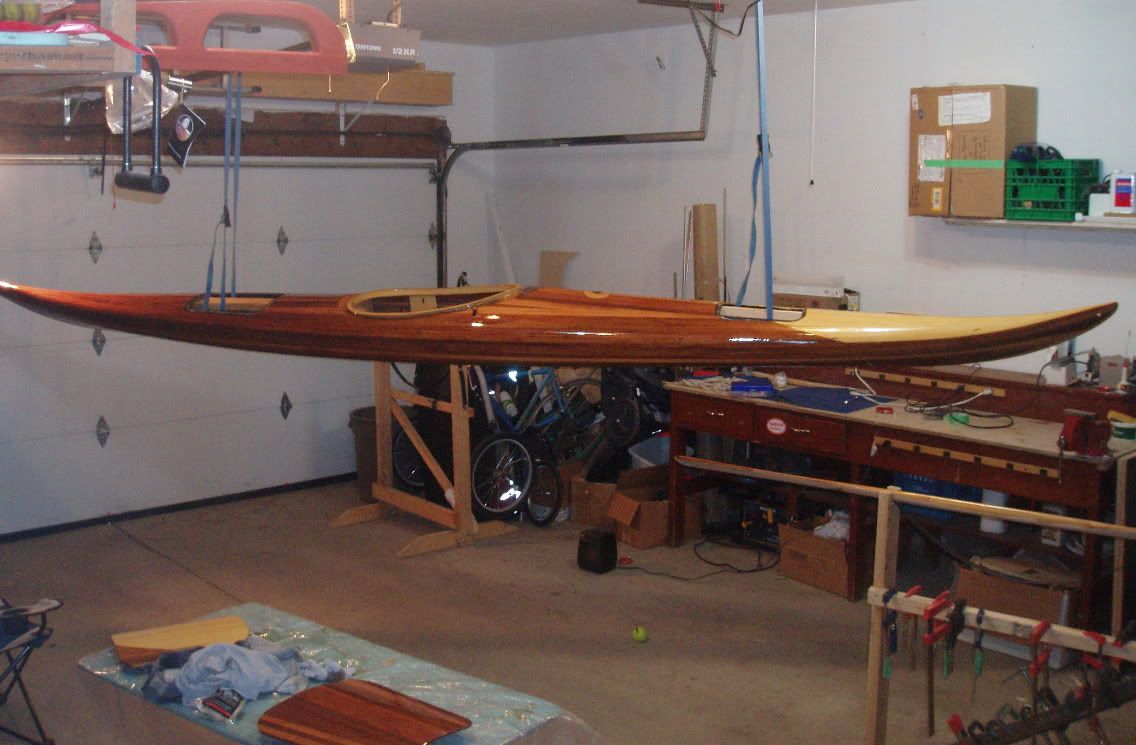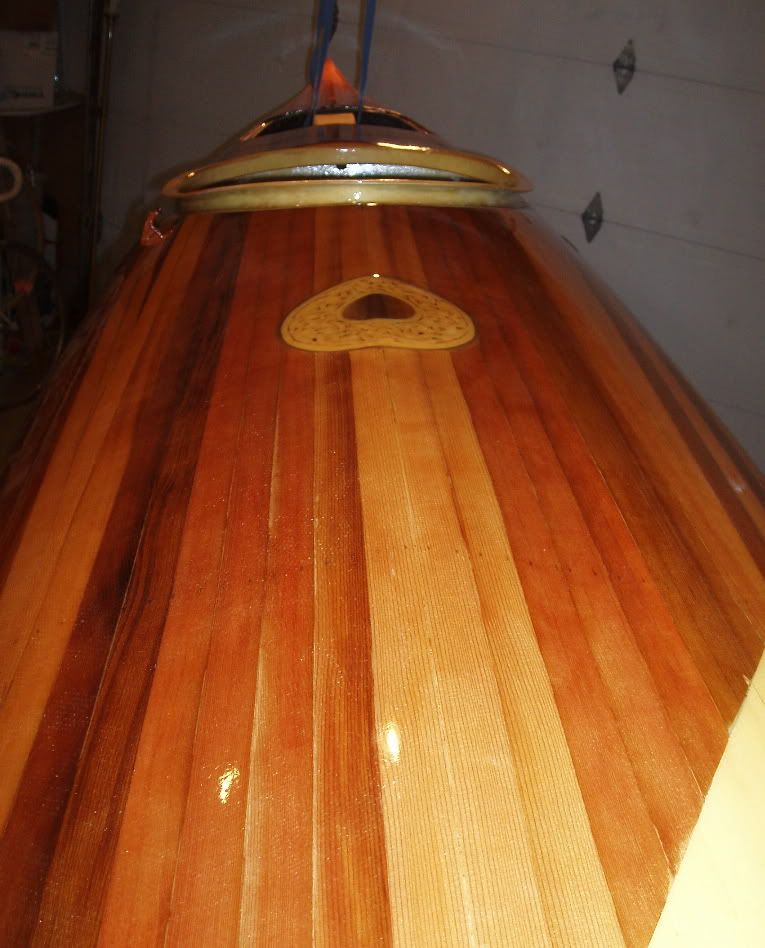Last night I applied, again with Rob's help, the first coat of varnish. I suspended the kayak from the ceiling so that I would be able to get at all sides, top and bottom at the same time. The whole kayak was lightly wiped with a tack cloth, then varnishing started. I am using the Flagship Spar Varnish purchased through Kisseynew Canoe Company. Once the can was opened, we poured the gallon of varnish out into 3 collapsible bottles (to minimize airspace in the container) with the remainder going into a glass jar. The remaining air in the containers was displaced using Lee Valley Finish Preserve. The varnish was strained through a disposable varnish filter then we began brushing the varnish on using disposable foam brushes. Rob worked on one side while I worked on the other, doing both the deck and hull, maintaining a wet edge as we proceeded from stern to bow down the kayak.
It seems that I put the varnish on heavier than Rob did & my side has the sags and runs to show for it. This morning I reviewed the varnishing instructions in Canoecraft and The Strip Built Sea Kayak. Some tips I have to keep in mind are to NOT go back and attempt to touch up a spot after a few minutes have passed & not to try to put on to heavy a coat.
I'm not too sure about trying to get the underside done at the same time. It's hard to get a good coat underneath and to really see what you are doing. I think for the subsequent coats I'll focus on the deck then once that has dried, flip it over on stands and do the hull. Maybe.
I'll give the boat a couple more hours of drying time then wet sand with 220 grit to take off all the drips, runs, sags, and dust that are in the first coat.
Here are a couple of pictures from this morning.



Now while the varnish dries I'm going to re-read Martin Step's varnishing advice from Green Valley Boat Works.
Không có nhận xét nào:
Đăng nhận xét